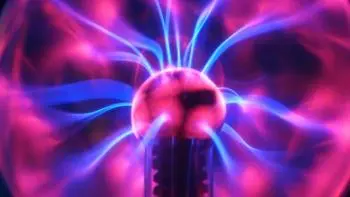
Electrization is a phenomenon that has fascinated humanity since ancient times, endowing electrically neutral objects with electrical properties. From the Greeks to the present, the way in which objects can be electrically charged has been the subject of study and application in a wide variety of fields.
In this article, we show the basic concepts of electrization, the types of electric charge and the effects it produces on a charged object and on our environment. In addition, we will see how electrification is related to electricity and how it is used in modern technology.
What is electrization?
Electrization is the process by which an object is electrically charged. This occurs when the atoms of one object exchange electrons with another object. The object that gives up electrons becomes a charged body that can perform the function of a conductor, while the object that receives the electrons becomes an insulating body.
What is the relationship with electrostatic electricity?
Electrization and static electricity are closely related, as static electricity is a type of electrization. Static electricity occurs when there is a flow of negative or positive charges that are transferred between electrically neutral objects. This flow of positive and negative charges causes an accumulation of electrical charge on the surface of said objects.
Electrization can also occur through other processes, such as electrostatic induction, friction, convection, radiation, and ionization. However, static electricity is the most common type of electrification experienced in daily life.
Forms of electrization
There are three main forms of electrization: by rubbing, by contact, and by induction.
Contact electrization
A body is endowed with electrization by contact when two electrically charged objects come into contact with each other. The object with an excess of negative charges transmits its electrical properties to the object with a positive electrical charge.
Electrons are redistributed between the two objects until a balance of charge is reached.
Rubbing electrization
Electrization by rubbing is a process in which electricity was transferred from one body to another that comes into contact through rubbing, such as a plastic comb and a piece of wool. This type of electricity is known as surface electrification. The amount of electrical charge that is transferred depends on the material, the pressure, and the speed with which the two objects rub together.
Induction electrization
Induction electrization is a phenomenon in which an electrically charged object (called the inductor object) induces an electrical charge in another nearby object without the two objects directly touching. This occurs due to the interaction between the electric fields of the two objects in which charges of different signs attract each other.
When an electrically charged object approaches another conducting object, the electric field of the first object induces an opposite electric charge on the nearer surface of the second object and an equal electric charge on the farther surface of the first object. As a result, the second object gains a net charge, but the first object loses no charge.
This phenomenon is used in many practical applications, such as electrical transformers, electrical motors, and electrical generators.